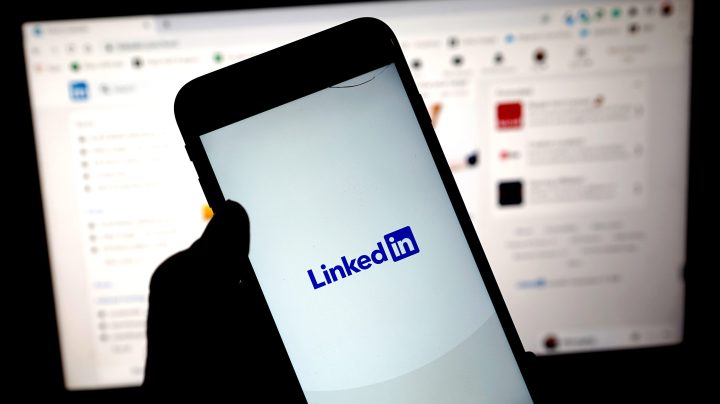
Looking to go viral? Try LinkedIn.

LinkedIn has long been a place for cultivating a professional image and posting tightly scripted work announcements. But now, instead of calling attention to their new jobs or their impressive CVs, users are opening up their hearts and personal lives to their feeds. Whether the topic is burnout, anxiety or personal triumphs, LinkedIn has become a platform to overshare — and possibly go viral in the process.
Lora Kelley of The New York Times wrote about this trend in the LinkedIn universe and talked to “Marketplace” host Kai Ryssdal about what it means for the future of the Microsoft-owned platform.
The following is an edited transcript of their conversation.
Kai Ryssdal: Look, I’m gonna get straight to it. How did, as the headline of [your] piece says, how did LinkedIn become a place to overshare? I mean, aren’t there plenty of places to overshare?
Lora Kelley: Yeah, that’s a great question, and something that I was so curious about. I just personally, over the last several months, have noticed in my own LinkedIn feed, people posting everything from crying selfies to posts about illnesses and personal challenges. And I think that a big part of this was people were working from home, people were seeing their kids in the background of calls, so it really is a shift that people are posting about things like burnout and mental illness and some of the more personal challenges that are affecting their work.
Ryssdal: I mean, I can get the post about burnout, right? Because that’s completely germane and relevant to the professional environment these days. And you know, it happens everywhere, right? I guess the question is, what does LinkedIn, you know, the executives, say about it because fundamentally, they have to run a business. And they need to be attuned to how their users are feeling about their experiences on their platform, right?
Kelley: Definitely. LinkedIn is walking a pretty fine line here. Their executives are neither encouraging nor discouraging personal posts. They’ve definitely noticed a spike in personal posts, but they’re not really encouraging or discouraging. Interestingly, something that they are doing is trying to build up LinkedIn as a content creation site. They have this new program they started last year called the content Creator Accelerator Program, and they’re recruiting influencers and providing them support to post, ideally, about topics like leadership and things that are sort of traditionally more relevant to LinkedIn.
Ryssdal: So basically, they’re looking for virality, just like every other user of every other social network is, right?
Kelley: That’s a good question. So actually, Daniel Roth, who’s the editor-in-chief of LinkedIn, told me that they sometimes get worried when they see things going viral. So again, it’s this sort of fine line. That being said, creators and people on the site are noticing that they’re getting benefits from going viral. One person who was in the content Creator Accelerator Program, an influencer who works under the name Natalie Rose, she told me that when she posted a crying selfie about anxiety and some of the stresses of being an influencer, it went totally viral. It got millions of impressions, and it led her to get some business opportunities.
Ryssdal: So it worked, right? I mean, so in that case, I guess it worked. So it’s good that she did that, for her.
Kelley: Yeah, it served her purposes.
Ryssdal: All right. I should have done a little reporting before I got in the studio with you, and I should have gone on your LinkedIn profile and checked out what you posted. Where are you on the personal-professional boundary on this thing?
Kelley: Personally, I basically just use LinkedIn to post about my articles. So, it was definitely fun to post this particular article on LinkedIn when it came out.
Ryssdal: What kind of buzz did you get? Have you gotten reactions?
Kelley: I would say I’ve got a sort of normal amount of engagement. You know, a few people said congrats. Some people from my high school liked it. That sort of thing.
There’s a lot happening in the world. Through it all, Marketplace is here for you.
You rely on Marketplace to break down the world’s events and tell you how it affects you in a fact-based, approachable way. We rely on your financial support to keep making that possible.
Your donation today powers the independent journalism that you rely on. For just $5/month, you can help sustain Marketplace so we can keep reporting on the things that matter to you.











